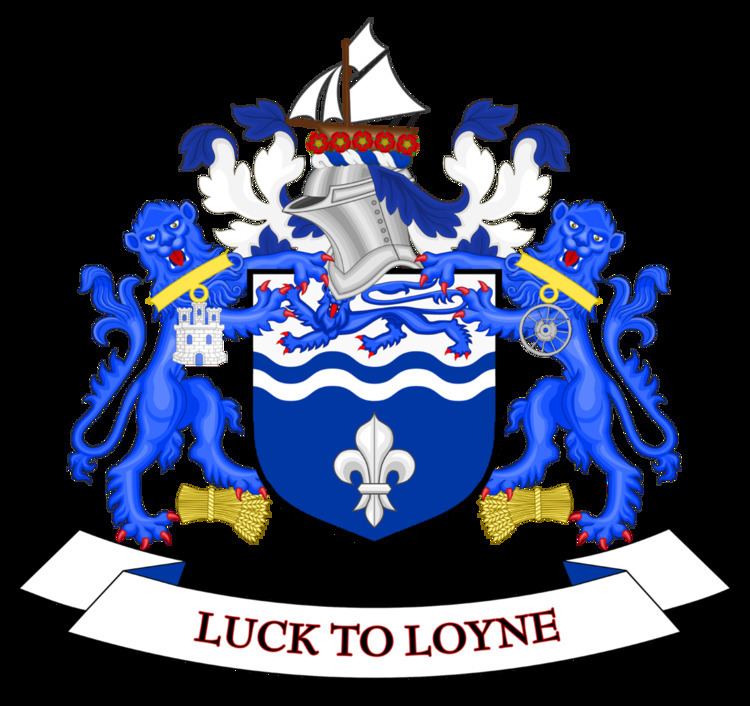Sovereign state United Kingdom City status 14 May 1937 | Constituent country England Area 575.9 km² | |
 | ||
Weather 6°C, Wind W at 10 km/h, 94% Humidity | ||
The City of Lancaster (/ˈlæŋkæstər/) is a local government district of Lancashire, England, with the status of a city and non-metropolitan district. It is named after its largest settlement, Lancaster, but covers a far larger area, which includes the towns of Morecambe, Heysham, and Carnforth, as well as outlying villages, farms, rural hinterland and (since 1 August 2016) a section of the Yorkshire Dales National Park. The district has a population of 142,300 (mid-2015 est.), and an area of 222.5 square miles (576.2 km2).
Contents
The current city boundaries were set as part of the provisions of the Local Government Act 1972, and cover an amalgamation of five former local government districts—the municipal boroughs of Lancaster and Morecambe and Heysham, together with the Carnforth Urban District and rural districts of Lancaster and Lunesdale, all from the administrative county of Lancashire.
The city council's primary responsibility is refuse collection.
Government
The higher tier of local government is Lancashire County Council. At a lower level, there are many parish councils: See this list of civil parishes in the district.
The district comprises two parliamentary constituencies: Lancaster and Fleetwood, and Morecambe and Lunesdale. In the 2010 General Election both seats were won by the Conservatives. In 2015, Lancaster and Fleetwood was gained by Labour, whilst Morecambe and Lunesdale was retained by the Conservatives.
Following a defection in 2016, the council stood at:
Elections for all council seats are held every four years. There were elections in 2007, 2011 and 2015.
Demography
At the 2011 UK census, the City of Lancaster had a total population of 138,375. Of the 57,822 households in the city, 33.5% were married couples living together, 31.9% were one-person households, 7.8% were co-habiting couples and 10.0% were lone parents. These figures were similar to the national averages.
The population density was 233/km2 (600/sq mi) and for every 100 females, there were 91.8 males. Of those aged 16–74 in Lancaster, 26.7% had no academic qualifications, lower than 28.9% in all of England. The city of Lancaster had a higher proportion of white people than Lancashire and England.
Population change
The table below details the population change since 1801, including the percentage change since the last available census data. Although the City of Lancaster has existed as a district since 1974, figures have been generated by combining data from the towns, villages, and civil parishes that would later be constituent parts of the city.
Religion
At the 2011 UK census, 65.9% of Lancaster's population reported themselves as Christian, 1.3% Muslim, 0.4% Buddhist, 0.3% Hindu, 0.1% Jewish, and 0.1% Sikh. 24.5% had no religion, 0.5% had an alternative religion and 7.1% did not state their religion. The city is covered by the Roman Catholic Diocese of Lancaster, and the Church of England Diocese of Blackburn.
Economy
At the United Kingdom Census 2001, the City of Lancaster had 97,365 residents aged 16 to 74. Of these people, 4.0% were students with jobs, 9.6% students without jobs, 5.1% looking after home or family, 6.0% permanently sick or disabled and 2.8% economically inactive for other reasons.
In 2001, of the 55,906 residents of the City of Lancaster in employment, the industry of employment was 16.7% retail and wholesale, 14.2% health and social work, 11.4% education, 11.2% manufacturing, 7.8% property and business services, 6.7% construction, 6.7% hotels and restaurants, 6.5% transport and communications, 5.7% public administration and defence, 2.5% finance, 2.4% energy and water supply, 2.2% agriculture, 0.4% mining, and 5.3% other. This was roughly in line with national figures,although the proportion of jobs in agriculture which was more than the national average of 1.5% and the percentage of people working in finance and was below the national average of 4.8%; the proportion of people working in property was well below the national average of 13.2%.
Civil parishes
Lancaster and Heysham lie within unparished areas.
